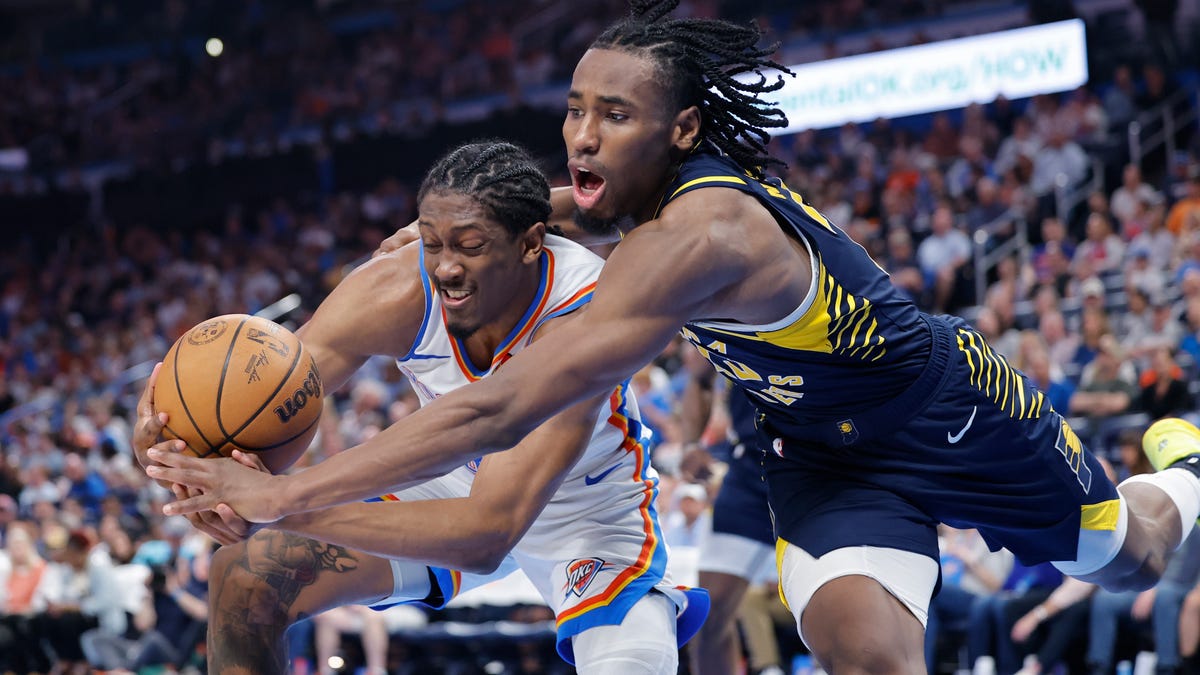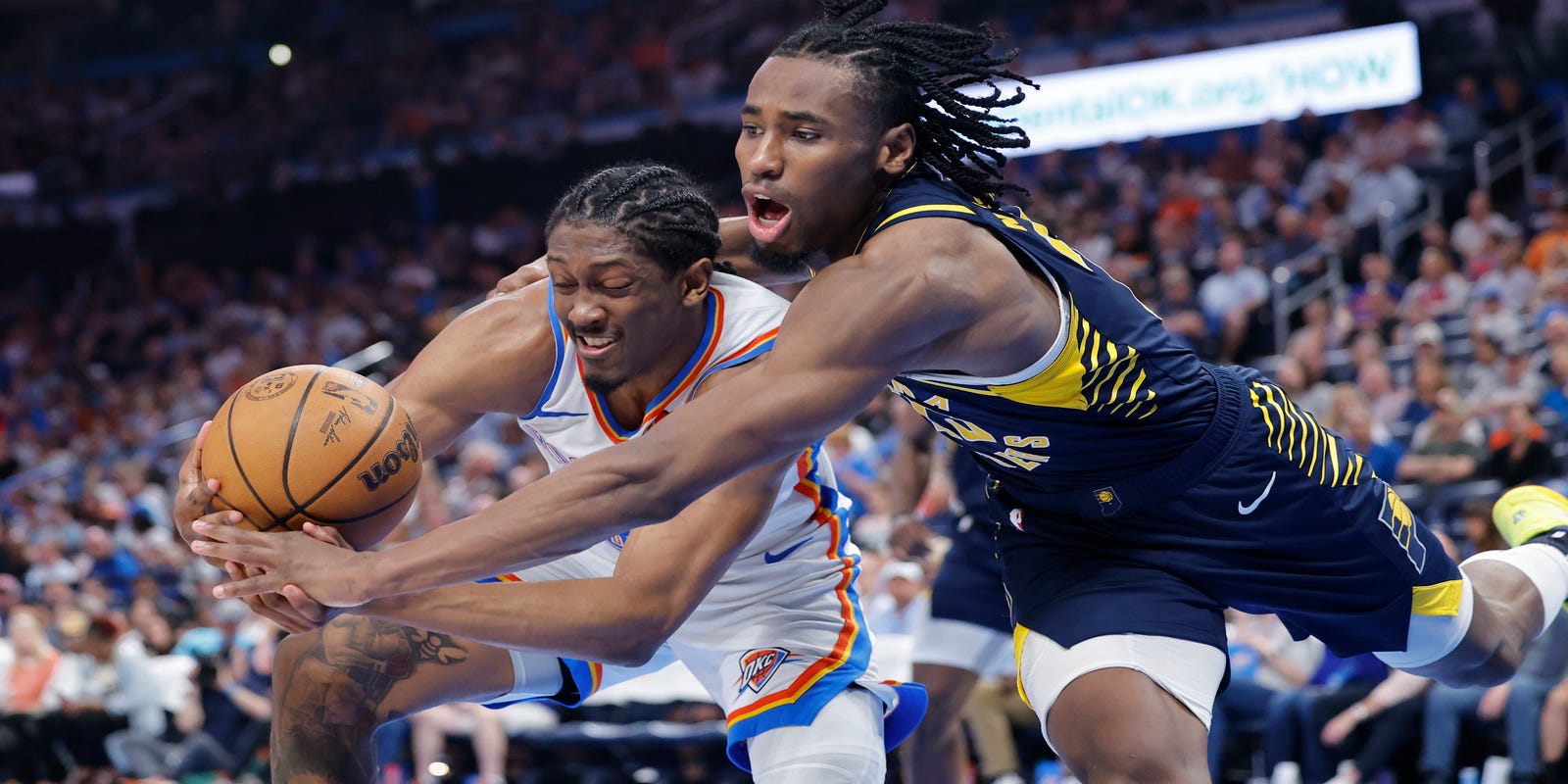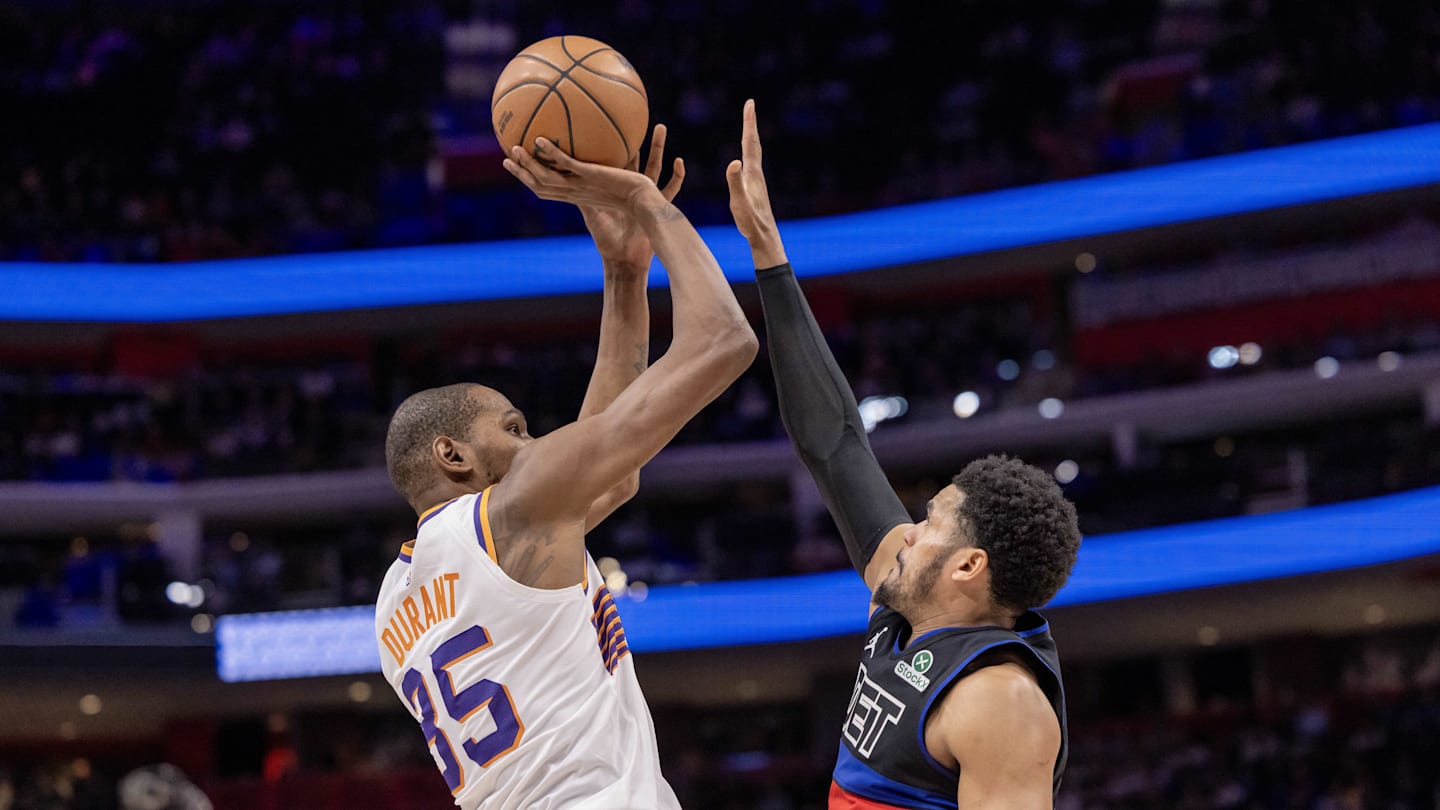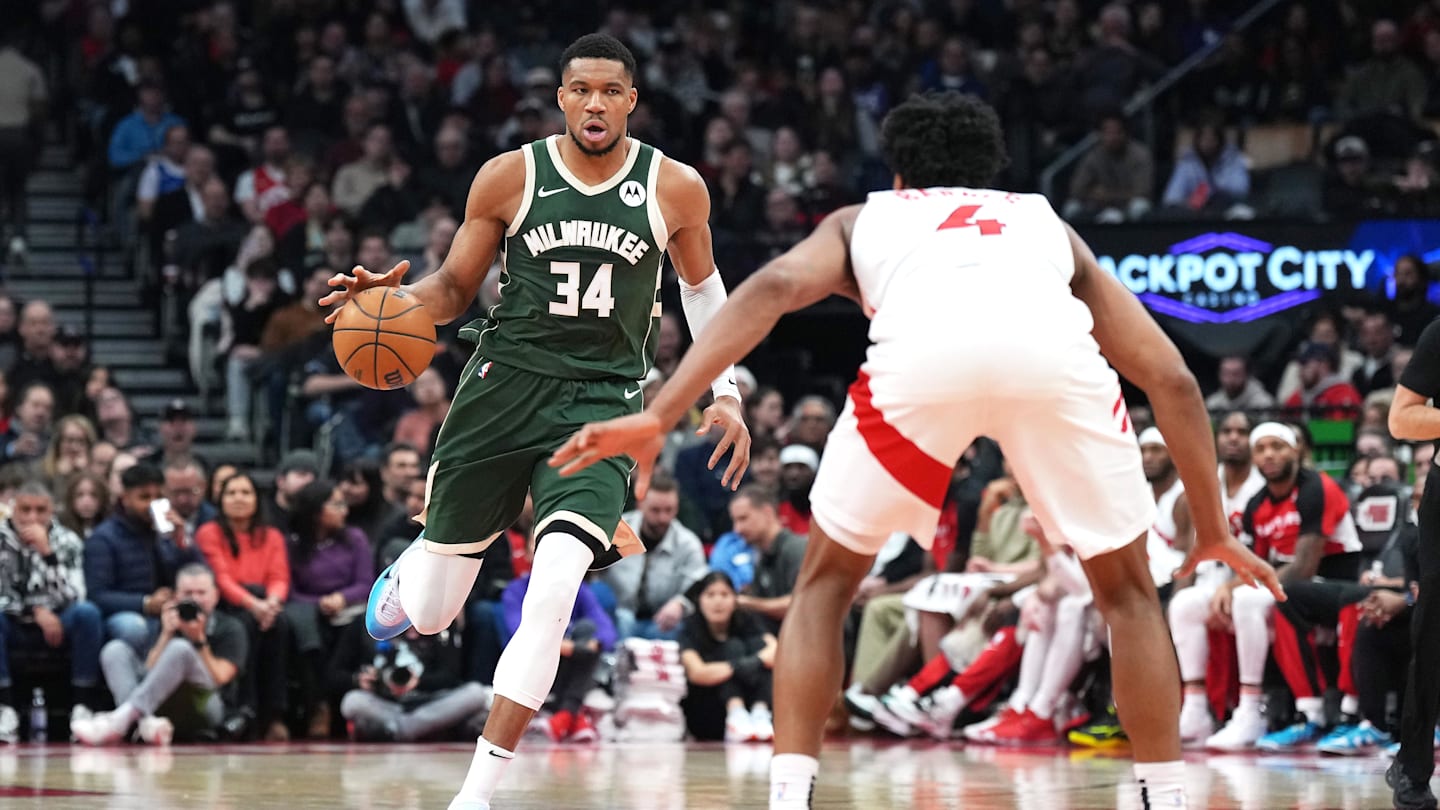
INDIANAPOLIS – Throughout their celebration of their Eastern Conference championship Saturday night, the Pacers kept talking about getting “four more,” of not being satisfied with just reaching the NBA Finals for the first time since 2000 but maintaining their focus on claiming the franchise’s first NBA title and first league championship since their 1973 ABA title. They took pictures holding up four fingers, noting the number of wins it would take for them to claim the last best-of-seven series of the season.
“This is the sixth time that I’ve been to an NBA Finals,” coach Rick Carlisle said. “Three as a player, one as an assistant coach, second time as a head coach. This is no time to be popping champagne.”
The Pacers did, however, drink champagne. They didn’t spray bottles all over each other and soak the locker room, but they did arrange chairs around in a circle to sit and drink and take in the moment as they do know the last step to a title will be the hardest and there’s no guarantee there will be another celebration.
When they lost to the Oklahoma City Thunder on the road in late March, Carlisle called the Thunder “the best team on the planet right now” and the Thunder haven’t done anything to change his mind since. They ended the regular season 68-14, posting the fifth-most wins in NBA history. They swept their first-round series against the Grizzlies, outlasted the Nuggets in a seven-game battle in the Western Conference semifinals and then dispatched the Timberwolves in five games in the Western Conference Finals.
“We understand the magnitude of the opponent,” Carlisle said. “Oklahoma City has been dominant, all year long, with capital letters in the word DOMINANT. Defensively, they’re historically great and they’ve got all kinds of guys who can score. It’s two teams that have similar structures. Slightly different styles, but Oklahoma City has played faster this year. I think it has the makings of a great series. For me, from a coaching perspective, it’s two teams that are fun to watch and are fun to watch compete.”
Here’s a position-by-position look at the series, an unexpected matchup between franchises in two of the league’s smallest markets, but one that includes some of the league’s best young players.
Point guard: Tyrese Haliburton vs. Shai Gilgeous-Alexander
Both teams built their rebuilds around their top-of-the-line, All-NBA point guards, but those guards take very different approaches to the position.
Tyrese Haliburton has always believed first in involving his teammates and there is arguably no better distributor among the NBA’s point guards. He led the NBA in assists last year, finished third this year and led the league in assist-to-turnover ratio among players with a qualifying number of games. He’s leading all players in this year’s playoffs with 9.8 assists per game against just 1.9 turnovers per game. He’s recorded double-figure assists in nine of the Pacers’ 16 playoff games and in 26 combined regular season and playoff games since the All-Star break. He struggled to shoot the ball early in the season, but he averaged 20.6 points per game on 53.3% shooting and 43.9% shooting in regular season games after the All-Star break and is averaging 18.8 points per game on 46.6% shooting in the playoffs. He missed the All-Star Game but was named third-team All-NBA for the second straight season.
Shai Gilgeous-Alexander tends to look for his own shot first and then distribute once defenses collapse on him, and this year no one in the league was better at getting his shots than he was, hence the reason he was named MVP and Western Conference Finals MVP.
Gilgeous-Alexander led the NBA in scoring with 32.7 points per game, shooting 51.9% from the floor, ranking second in the league in field goals per game with 11.3 and first in free throws per game with 7.9 per game. For such a great scorer, there’s only so much flash to his game, but he’s machine-like at getting to his spots, he can score at every possible level and he’s the best in the league at selling contact and drawing fouls. He’s also a better-than-average 3-point shooter, making 37.5% of his attempts from beyond the arc and 163 total for the year. He averaged 6.4 assists per game against 2.4 turnovers per game, and he had the best net rating in the NBA among starters who appeared in at least 50 games (+16.7).
Advantage: Thunder
Shooting Guard: Andrew Nembhard vs. Luguentz Dort
Nembhard and Dort — teammates last summer in the Olympics on Team Canada — are in the lineup primarily because of defense. They take on the opposing team’s best perimeter scorers most nights, but they also provide important offensive contributions.
Nembhard is a point guard by trade, so he’s operated as a secondary ball-handler to allow Haliburton to move off the ball to escape the constant defensive pressure on him. However, he’s also a three-level scorer and tends to become a much better outside shooter in big moments. He averaged 10.0 points per game in the regular season but is averaging 12.8 points per game in the playoffs this year after averaging 14.9 per game in last year’s playoffs. In the regular season, he’s a 33.5% 3-point shooter but in the playoffs, he’s made a remarkable 48.3% of his 3s.
Defensively, he’s been taking on top assignments since his rookie year and made a significant leap toward being an elite-level defender this year. He had six steals in Game 6 against the Knicks and his defense on Jalen Brunson helped the Pacers put the series away.
Dort — powerfully built at 6-4, 220 pounds — may be the most physical perimeter defender in the league and was recognized this season with first-team All-Defensive team honors. Taking on top defensive assignments every night, he averaged 1.1 steals per game and helped anchor a Thunder defense that lead the NBA in most major defensive categories, including defensive rating at 106.6 points per 100 possessions. While Nembhard tends to take on more of a ball-handling role next to Haliburton, Dort’s offensive role is mostly to space the floor for Gilgeous-Alexander. He averaged 10.1 points per game this season on 41.2% 3-point shooting with 170 of his 258 field goals being 3-pointers.
Advantage: Thunder
Small Forward: Aaron Nesmith vs. Jalen Williams
The Pacers and Thunder are similar at small forward too with each team having hard-playing, do-everything wings who can shoot it.
Nesmith has been one of the Pacers’ most reliable defenders and shooters and arguably their most consistent high-effort player since he was acquired from the Celtics in July of 2022. He missed 35 games with a severe ankle sprain this season, but he turned up his game after the All-Star break averaging 15.0 points per game on 52.2% shooting. In the postseason, he’s been just as excellent, averaging 14.1 points per game on 50.3% shooting including 50% from 3-point range. His eight 3-pointers including six in the fourth quarter in Game 1 against the Knicks provided most of the necessary points for the Pacers’ stunning late-game rally.
Williams has been a little more prolific, though, and has established himself as the Thunder’s No. 2 scoring option behind Gilgeous-Alexander. He averaged 21.6 points per game to go with 5.3 rebounds, 5.1 assists and 1.6 steals this season. He was named third-team All-NBA and second-team All-Defense. He’s had some issues with in consistency in the playoffs, but he’s still averaging 20.4 points per game, 5.8 rebounds, 5.3 assists and 1.6 steals.
Advantage: Thunder
Power Forward: Pascal Siakam vs. Chet Holmgren
Siakam and Holmgren are both long, wiry big men with funky builds but more skill than might be immediately apparent.
Of the two, Siakam has the more common frame at 6-8, 245 pounds though his wingspan is 7-3. The native of Cameroon didn’t pick up basketball until he was about 17, but he’s developed remarkable skill as a three-level scorer. He’s stepped up this season as a floor-runner and transition finisher, and he’s always been excellent around the rim. He has a nearly unguardable turnaround fadeaway jumper out of a post-up and had the best 3-point shooting season of his career. He led the Pacers with 20.2 points per game on 51.9% shooting including 38.9% from 3-point range. In the playoffs he’s averaging 21.1 points per game on 53.7% shooting including 46.3% from 3 and was named Eastern Conference Finals MVP.
Holmgren missed most of the season with a fractured hip, but the 7-1 big man averaged 15.0 points and 8.0 rebounds per game this season in 32 games. He shot 37.9% from 3-point range and also blocked 2.2 shots per game. In the playoffs, he’s averaging 16.4 points, 8.6 rebounds and 2.0 blocks per game. At just 23, he has a lot of room to grow and is on a great team to grow on.
Advantage: Pacers
Center: Myles Turner vs. Isaiah Hartenstein
Turner and Hartenstein met last year in a playoff series when Hartenstein was with the Knicks. They have dramatically different styles and neither could stop the other’s strength.
Turner averaged 16.1 points per game in that series, shooting 53.8% from the floor and 48.3% shooting, hitting 14 of his 29 3-point attempts in the series. He also blocked 2.3 shots. Hartenstein, meanwhile, averaged 9.0 rebounds per game in the series grabbing 12 offensive rebounds in a single game.
Turner, 10 years into his career with the Pacers, maintains a niche as a three-level scorer. He averaged 15.6 points per game this season on a career-best 39.6% shooting from 3 and also averaged 2.0 blocked shots per game. Hartenstein, meanwhile, is still one of the toughest players in the league to keep off the glass as he averaged 11.2 points and 10.7 rebounds per game this season.
Advantage: Pacers
Bench
The Pacers and Thunder lean heavily on their benches and their benches fit their overall roster construction.
The Pacers’ bench led the league in scoring last season and even though this year’s group hasn’t been as productive, it’s still been more than steady. Forward Obi Toppin finished seventh in the NBA in total points off the bench this season with 766 as a rim runner and finisher who makes sure the Pacers capitalize on transition opportunities. Veteran point guard T.J. McConnell finished 11th in bench scoring with 708 points and first in bench assists with 348. Guard Bennedict Mathurin moved to the bench in February when Nesmith was moved back into the starting lineup after his injury. He averaged 16.1 points per game this season and though he was less effective off the bench than as a starter, he still provides scoring punch to the second unit.
Backup centers Thomas Bryant and Tony Bradley and wings Ben Sheppard and Jarace Walker have made significant impacts in the postseason. Walker’s status is in limbo, however, after an ankle injury in Game 6 sent him out of the arena on crutches.
The Thunder’s bench has had more moving parts to it as they had eight players on the team start at least 16 games. Still, the current second-unit adds long-armed wings and tough defenders to a group that has lots of those things in the starting lineup as well. Wing Cason Wallace has established himself as a top-level perimeter defender in his second year and he’s averaged 8.4 points per game. Guard Alex Caruso has been a top defender for years as he can pressure the basketball and fight big men in the post. Aaron Wiggins is an athletic wing scorer who averaged 12.0 points per game somewhat quietly. Isaiah Joe is the team’s best outside shooter as his 192 total 3-pointers led the team. Jaylin Williams and Kenrich Williams gives the Thunder size on the bench who can each handle both the 4 and the 5. They combine to make the Thunder’s lineups stronger and even more switchable on defense.
Advantage: Thunder
Get IndyStar’s Pacers coverage sent directly to your inbox with our Pacers Update newsletter.



